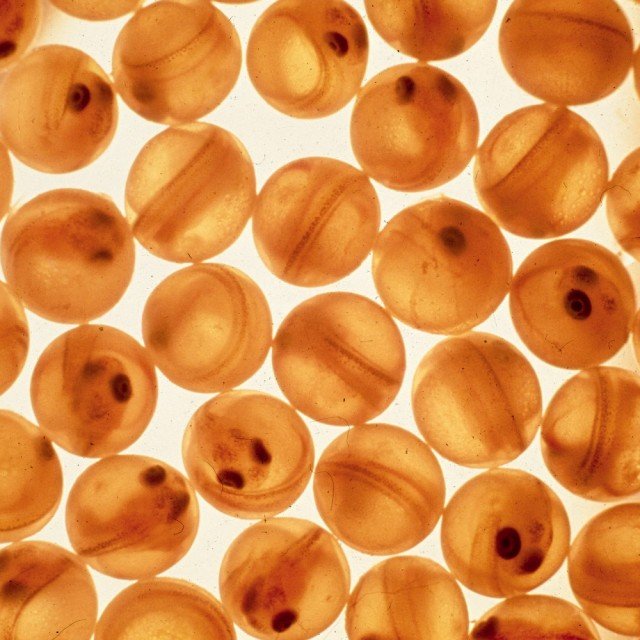Bigger, Faster, Stronger
Larval fish, called fry, are ready to hatch after about two weeks of growth. Photo: Great Lakes Fishery Commission
Yellow perch is a staple of Lake Erie restaurant menus, with menu boards along the shore advertising everything from classic fish fry to local specialties. While most of these fish were likely caught in the wild, some of them will have come from aquaculture: fish farms throughout the Great Lakes region raise yellow perch, and aquaculture sales in Ohio tripled from $1.8 million to $6.6 million in 2010.
As with all agriculture products, selective breeding – a process in which parents are selectively bred to enhance specific desired traits in their offspring – has improved production and led to most of the fruits, vegetables, and farm animals we know today. Corn kernels are larger and more uniformly colored than those produced by ancient corn plants, dairy cows produce more milk than their ancestors, and commercial bananas are larger and sweeter than their ancestors, to name just a few examples of genetically improved species.
Researchers at the Ohio State University’s South Centers in Piketon, partially funded by Ohio Sea Grant, are now selectively breeding yellow perch to thrive in aquaculture operations, but they’re using modern technology to give them an edge: genetic analysis.
